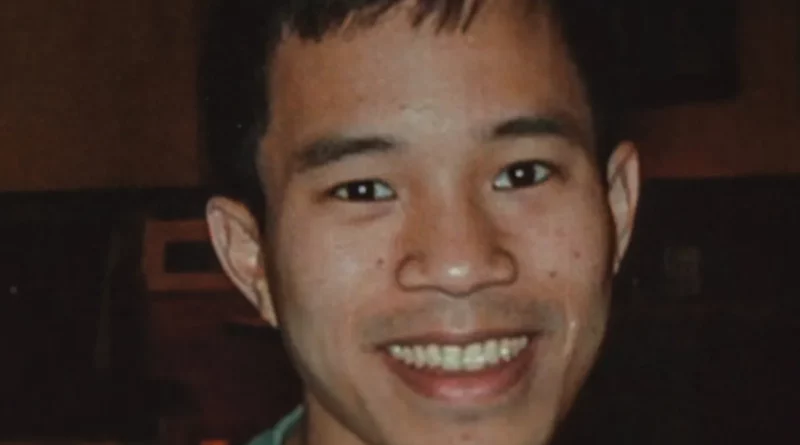Robert Wone Killed and SA’d at Friend’s House in Washington DC
The murder of Robert Wone on August 2, 2006, remains one of the most perplexing and haunting unsolved cases in Washington, D.C. history. A promising attorney with a bright future, Wone was brutally killed under bizarre and highly suspicious circumstances at the home of a trusted friend. Despite multiple investigations, no one has been charged with his murder, leaving behind more questions than answers.
This article delves deep into the details of that fateful night, the complex legal proceedings that followed, and the lingering mysteries that continue to baffle investigators and the public alike.
The Night of August 2, 2006
Robert Wone’s Background and the Events Leading Up to His Death
Robert Eric Wone was a 32-year-old attorney, known for his intelligence, work ethic, and kindness. He had recently taken a position as general counsel for Radio Free Asia after working at the prestigious law firm Covington & Burling. He was married to Kathy Wone, and the couple had a seemingly happy and fulfilling life.
On August 2, 2006, Wone had planned to work late in Washington, D.C., and rather than making the long commute home to Oakton, Virginia, he arranged to stay overnight at the home of his college friend, Joseph Price. Price, a prominent attorney, lived at 1509 Swann Street NW in the Dupont Circle neighborhood with his domestic partner, Victor Zaborsky, and their close friend Dylan Ward. The three men shared a polyamorous relationship, which was well known in their social circles.
At around 10:30 PM, Wone arrived at the Swann Street residence. He had reportedly showered, brushed his teeth, and prepared to sleep on a pull-out couch in a guest room on the first floor. However, within 90 minutes, he would be found dead.
The Shocking 911 Call and the Discovery of Robert Wone’s Body
At 11:49 PM, a chilling 911 call was placed by Victor Zaborsky, who sounded frantic as he told the operator that a “friend had been stabbed” by an intruder. When paramedics arrived just minutes later, they found Wone’s body in the guest room, lying perfectly positioned on his back with three deep stab wounds to his chest and abdomen.
Oddly, there was very little blood at the scene, and Wone’s body showed no signs of a struggle or defensive wounds. His hands were neatly placed at his sides, his shirt still tucked in—details that seemed inconsistent with a violent knife attack.
The Residents’ Account of What Happened
The three men in the house, Price, Zaborsky, and Ward, all claimed that an unknown intruder had broken in, stabbed Wone, and fled undetected. They insisted that none of them had any involvement in the murder. However, investigators found no signs of forced entry, and the security system had been recently activated just before the murder.
Price, who was the most vocal of the three, theorized that the killer must have used a towel or other material to absorb the blood. He also suggested that Wone may have been paralyzed by a stun gun, though there was no medical evidence to support this claim.
The Autopsy Findings and Investigation
The Medical Examiner’s Report Raises More Questions
The autopsy conducted by Dr. Lois Goslinoski further deepened the mystery surrounding Wone’s death. Some of the most disturbing findings included:
- No defensive wounds – suggesting that Wone did not resist or fight back against his attacker.
- Minimal blood at the crime scene – highly unusual for stab wounds of such severity.
- Possible signs of sexual assault – traces of semen were found on Wone’s body, which did not match any of the men in the house.
- Lack of movement or reaction to the stabbing – raising suspicions that Wone may have been drugged or immobilized before his death.
Despite these findings, no drugs were detected in his system, though some experts have suggested that exotic paralytic drugs—ones not commonly tested for—may have been used.
Investigators Grow Suspicious of the Three Housemates
From the very beginning, police doubted the intruder theory. Several key factors did not add up:
- The absence of a struggle – If Wone had been awake, why didn’t he fight back?
- The neatly arranged crime scene – Wone’s body placement seemed too perfect.
- The strange behavior of the three housemates – Investigators noted that the men appeared nervous yet eerily calm during questioning.
- A missing knife – The kitchen had a set of cutlery, but one knife was missing.
- Evidence of cleaned-up blood – Luminol testing indicated that blood had been wiped away from the crime scene.
Police began suspecting that the crime had been staged and that the three housemates were hiding the truth.
Sexual Assault and Unanswered Questions
Forensic evidence suggested that Robert Wone was sexually assaulted, and an autopsy report revealed his own semen was found on his body and clothing in a manner that raised significant concerns.
How Was This Determined?
- Semen Found on His Body and Clothing
- Autopsy results showed Robert Wone’s own semen present in his rectal area and on his underwear.
- This was unusual because there was no evidence that Wone had engaged in sexual activity prior to his death.
- There were no signs of consensual or natural ejaculation, leading to questions about how the semen got there.
- Signs of Sexual Assault
- The rectal area showed signs of possible trauma, which led forensic experts to believe that Wone may have been sexually assaulted before or after his death.
- The lack of struggle or defensive wounds suggested that Wone may have been incapacitated at the time.
- Was He Drugged or Paralyzed?
- Investigators theorized that Wone may have been drugged or otherwise incapacitated before the attack.
- However, toxicology reports found no common sedatives or drugs in his system, though experts speculated that an exotic or undetectable paralytic drug may have been used.
- Staged Crime Scene and Clean-Up
- The lack of blood at the crime scene raised suspicions that Wone may have been assaulted, killed, and then cleaned up before police arrived.
- Luminol tests suggested blood had been wiped away, reinforcing theories of a cover-up.
Possible Methods of the Assault
- Given the lack of struggle and the presence of his own semen, experts theorized that:
- He may have been manually stimulated while incapacitated.
- A device could have been used to extract semen from his body.
- Post-mortem manipulation may have occurred to stage the scene.
Why This Detail Was Crucial to the Investigation
- The presence of Wone’s semen in an unnatural manner suggested a disturbing and possibly sadistic element to the crime.
- It contradicted the housemates’ version of events and further indicated staging and tampering with the evidence.
- It strengthened the theory that Wone had been assaulted and then killed to cover it up.
No Murder Charges Despite Strong Suspicion
- Despite these findings, no one was ever charged with murder, though Joseph Price, Victor Zaborsky, and Dylan Ward were charged with obstruction of justice.
- They were later acquitted in 2010, and Wone’s murder remains unsolved to this day.
This aspect of the case remains one of the most unsettling and debated elements in the mystery of Robert Wone’s death.
Legal Proceedings and the Trial
The 2008 Obstruction of Justice Charges
Despite growing suspicions, no one was charged with Wone’s murder. Instead, in 2008, Joseph Price, Victor Zaborsky, and Dylan Ward were indicted on charges of obstruction of justice, conspiracy, and evidence tampering.
Prosecutors argued that the three men had altered the crime scene to cover up what really happened, though they never presented a concrete theory about the murder itself.
The 2010 Acquittal
The trial began in 2010, and the prosecution faced significant challenges. They lacked direct evidence linking the three men to the murder, and despite the suspicious circumstances, the defense was able to argue that the case was built on speculation.
In June 2010, Judge Lynn Leibovitz acquitted all three defendants, stating that while she believed they knew more than they were saying, the prosecution failed to meet the burden of proof.
Theories and Lingering Mysteries
Possible Theories About What Happened That Night
Since no one has been convicted of the crime, numerous theories have emerged:
- Sexual Assault Gone Wrong – Some believe that Wone was drugged and assaulted, and that his murder was an attempt to cover up the crime.
- Personal Dispute Turned Deadly – Another theory suggests that a personal conflict within the house escalated to violence.
- Accidental Death and Cover-Up – Some posit that Wone may have died from another cause, and the stabbing was staged to disguise the true circumstances.
The Case Remains Unsolved
Despite over a decade of investigations, no one has been arrested for murder in the case of Robert Wone. His widow, Kathy Wone, later filed a wrongful death lawsuit, which was settled in 2011.
The case continues to be a topic of speculation, with new developments occasionally surfacing in true crime documentaries and podcasts.
Why Weren’t Any of the Housemates Charged with Robert’s Murder?
It may seem like an open and shut case. You’ll imagine one or all the housemates would be rotting in jail somewhere, but how did they avoid murder charges and how are they remaining free to live their lives with no repercussions?
The housemates—Joseph Price, Victor Zaborsky, and Dylan Ward—were never charged with Robert Wone’s murder due to a lack of direct evidence linking them to the killing. However, they were later charged with obstruction of justice, conspiracy, and tampering with evidence but were acquitted in 2010. Below are the key reasons why they avoided murder charges despite strong suspicions.
1. No Direct Evidence Linking the Housemates to the Murder
- No forensic evidence (DNA, fingerprints, or blood) directly tied them to the act of stabbing Robert Wone.
- While Wone’s own semen was found on his body, and there was evidence of possible sexual assault, none of the housemates’ DNA was found in places that directly implicated them.
- No murder weapon was definitively identified. A knife was recovered, but experts believed it wasn’t the actual weapon used.
2. No Witnesses & the Lack of a Confession
- The only people in the house at the time of the murder were Price, Zaborsky, and Ward.
- They all stuck to the same story: a mysterious intruder had entered, killed Wone, and disappeared without a trace.
- None of them confessed, and they refused to change their statements despite repeated police interrogations.
3. The “Intruder” Theory Was Implausible but Unprovable
- Investigators did not believe their intruder story, as there was no sign of forced entry, and the home had a high-tech security system that had been armed shortly before the murder.
- However, without a clear alternative explanation, prosecutors struggled to prove what actually happened.
4. Staging and Tampering Suspicions, but No Murder Charge
- The crime scene appeared staged—Wone’s body was positioned too neatly, there was very little blood despite deep stab wounds, and forensic testing showed blood had been wiped away.
- The 911 call by Victor Zaborsky sounded oddly controlled and rehearsed, leading police to suspect deliberate staging.
- However, staging after the fact is not the same as proving murder, and prosecutors could only charge them with obstruction of justice instead.
5. The Prosecution’s Case Was Circumstantial
- The biggest hurdle for a murder charge was that the prosecution only had circumstantial evidence.
- There were too many unknowns, including:
- How Wone was incapacitated (no detectable drugs in his system, but suspected paralysis).
- Who actually stabbed him (if any of the housemates did it).
- Why he was killed (motive remained unclear).
- A murder conviction requires proof beyond a reasonable doubt, and prosecutors feared they wouldn’t win a conviction.
6. The 2010 Trial and Acquittal
- Instead of murder charges, the housemates were charged with obstruction of justice, evidence tampering, and conspiracy.
- Prosecutors argued that they knew what really happened and covered up the crime.
- In June 2010, Judge Lynn Leibovitz acquitted all three, stating that she believed they knew more than they admitted but that the prosecution did not prove their case beyond a reasonable doubt.
7. The Civil Lawsuit and Settlement
- Kathy Wone, Robert’s widow, later filed a wrongful death lawsuit against the three men.
- The lawsuit settled in 2011, with undisclosed terms, but no one was ever criminally convicted for his murder.
Final Thoughts: Why the Case Remains Unsolved
- The police and many legal experts strongly believe the three housemates were involved, but prosecutors lacked the necessary evidence to file murder charges.
- Theories suggest that Wone was sexually assaulted, incapacitated, and killed to cover up the crime, but without a confession, physical evidence, or eyewitnesses, proving murder in court was deemed impossible.
- To this day, Robert Wone’s murder remains unsolved, and no one has ever been held accountable for his killing.
Conclusion
The murder of Robert Wone remains one of the most chilling and perplexing unsolved cases in modern American history. The lack of answers, conflicting accounts, and bizarre circumstances have cemented this case as a true crime enigma.
To this day, no one has been held accountable for Robert Wone’s death, leaving his family and the public with haunting questions that may never be answered.
Discover more from City Towner
Subscribe to get the latest posts sent to your email.




